Unheard Ways To Achieve Greater Vitiligo Ayurvedic Treatment
About Vitiligo
Vitiligo is a condition in which the skin loses melanin, Vitiligo is a condition in which white patches develop on the skin. Any location on the body can be affected, and most people with vitiligo have white patches in many areas.

Causes Of Vitiligo
The skin doesn’t have its characteristic color because it has lost its melanin. For some reason, the pigment-forming cells known as melanocytes have been destroyed.
We don’t know exactly why this happens. It might be an autoimmune condition, where your body’s defenses turn on your own cells instead of attacking invading germs.
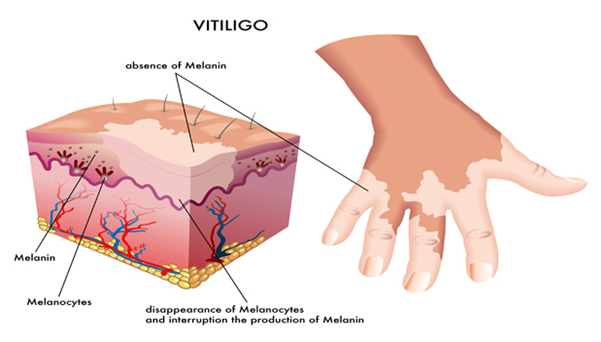
Although vitiligo affects all races equally, it’s more noticeable in dark-skinned people.
Symptoms Of Vitiligo
You’ll often lose pigment quickly on several areas of your skin. After the white patches appear, they may stay the same for a while, but later on, they might get bigger. You may have cycles of pigment loss and stability.
Vitiligo commonly affects body folds (such as armpits), places that have been injured in the past, and areas exposed to the sun, around moles, or around body openings. It can also affect eyelids and hair.

It’s rare for the pigment to return once the white patches have developed.
Ayurvedic Treatment For Vitiligo At Central India
- Tvacyam
- Varnyam
- Svitragnam
- Katu rasa dravya prayogyam
Ayurvedic Medicines For Vitiligo At India
- Avalgujabijadi Churnam
Avalgujabijadi churnam is a herbal powder formulation, used for the treatment of leukoderma (vitiligo). It is used for external application.
- Ingredients of Avalgujabijadi Choornam:
Avalguja beeja- Bakuchi (Psoralea corylifolia)– 1 kudava [187 gms]
Shuddha Haratala (Purified Arsenic compound)- 1 pala [48 gms]
Reference: Astanga Hridayam.
Dosage: Apply to the affected area by making paste with Gomutra.
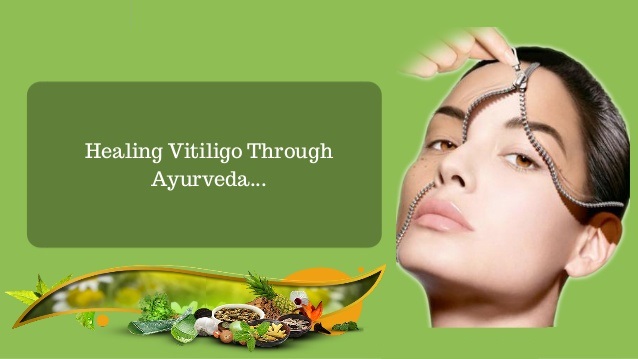
Manibhadra Guda
Manibhadra Guda is an effective Ayurvedic medicine. It is available in herbal jam or paste form. It is also known as manibhadra Gulam or Manibhadra Gud or Manibhadra leham. Guda refers to jaggery. This medicine is prepared in jaggery base.
Manibhadra Guda ingredients:
Vidanga – Embelia ribes – 48 grams
Amla – Emblica officinalis – 48 grams
Haritaki – Terminalia chebula – 48 grams
Trivrit – Operculina turpethum – 144 g
Jaggery – 576 g
Manibhadra Guda reference:
Ashtanga Hrudaya Chiktisa Sthana 19/ 31-32
Dosage: 15gm at night with hot water
Tagged Ayurvedic medicine Vitiligo, Best treatment for psoriasis India, Best vitiligo treatment India, Erythema nodosum ayurvedic treatment Nagpur, Erythema nodosum cure, Erythema nodosum diagnosis India, Erythema nodosum leprosum treatment India, Erythema nodosum natural treatment India, Erythema nodosum treatment India, Herbal medicine vitiligo Nagpur, Natural remedies for erythema nodosum India, Vitiligo natural treatment India
Various Ways To Do Ayurvedic Treatment For Venous Skin Ulcer
About Venous Skin Ulcer-
A skin ulcer is a type of wound that develops on the skin. A venous skin ulcer is a shallow wound that occurs when the leg veins don’t return blood back toward the heart the way they should. This is called venous insufficiency. See a picture of abnormal blood flow caused by venous insufficiency.
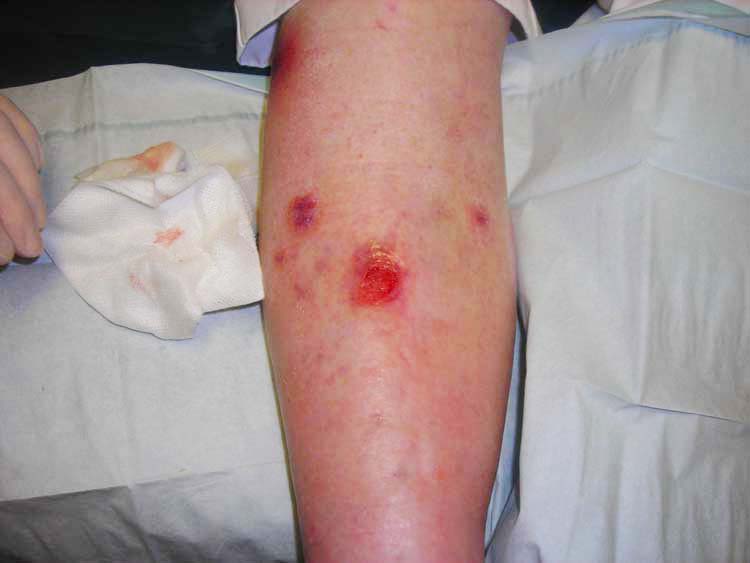
These ulcers usually form on the sides of the lower leg, above the ankle and below the calf. See a picture of areas affected by venous skin ulcers
Venous skin ulcers are slow to heal and often come back if you don’t take steps to prevent them.
A venous skin ulcer is also called a stasis leg ulcer.
Causes
Venous skin ulcers are caused by poor blood circulation from the legs, such as from venous insufficiency. Your veins have one-way valves that keep blood flowing toward the heart. In venous insufficiency, the valves are damaged, and blood backs up and pools in the vein. Fluid may leak out of the vein and into the surrounding tissue. This can lead to a breakdown of the tissue and an ulcer.
Veins that become blocked also may cause fluid to pool, leading to these ulcers.
Some things can increase your risk of venous skin ulcers. These include:
- Deep vein thrombosis, in which a blood clot (thrombus) forms in the deep veins of the legs.

- Obesity.
- Smoking
- Lack of physical activity.
- Work that requires many hours of standing.
There are two other types of skin ulcers that can happen on the lower leg or feet. They are different from venous skin ulcers.
- Arterial skin ulcers are less common than venous skin ulcers. They happen when artery disease is present (sometimes in combination with venous disease). These ulcers tend to be extremely painful. They are usually on the toes and feet.
- Neuropathic skin ulcers are also known as diabetic neuropathic ulcers. They occur in people who have little or no sensation in their feet because of diabetic nerve damage.
Symptoms
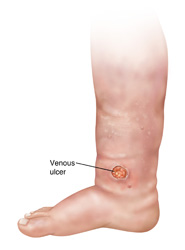 The first sign of a venous skin ulcer is skin that turns dark red or purple over the area where the blood is leaking out of the vein. The skin also may become thick, dry, and itchy.
The first sign of a venous skin ulcer is skin that turns dark red or purple over the area where the blood is leaking out of the vein. The skin also may become thick, dry, and itchy.
Without treatment, an ulcer may form. The ulcer may be painful. You also may have swollen and achy legs.
If the wound becomes infected, the infection may cause an odor, and pus may drain from the wound. The area around the wound also may be more tender and red.
Call your doctor when you first notice the signs of a venous skin ulcer, because you may be able to prevent the ulcer from forming. If an ulcer has formed, get treatment right away, because new and smaller ulcers tend to heal faster than larger ones.
Ayurvedic Treatment For Venous Skin Ulcer At Central India
- Pitta vata samanam
- Sophagnam
- Vrana sodhana ropana dravya prayogam
Ayurvedic Medicines For Venous Skin Ulcer
· Punarnavadi Kashayam
Punarnavadi Kashayam is a very famous Ayurvedic medicine in liquid form. It is also known as Punarnavashtaka kashaya, Punarnavashtak kwath. But there is slight difference. Punarnavadi kashayam contains turmeric as an extra ingredient. But both have quite similar properties and therapeutic action.
Punarnavadi Kashayam benefits:
It is used in the treatment of inflammatory conditions like myxedema, ascites, anasarca.
Some doctors use this medicine as natural diuretic.
It is also used in the treatment of respiratory conditions, cold, cough, dyspnoea, anemia and abdominal pain.
Punarnavadi Kashayam Ingredients:
Punarnava – Boerhaavia diffusa
Daru – Cedrus deodara
Nisha – Turmeric
Tikta – Andrographis paniculata
Patola – Luffa acutangula
Pathya – Terminalia chebula
Pichumarda – Neem
Musta – Cyperus rotundus
Nagara – Ginger
It is added with 8 parts of water, boiled and reduced to quarter part, filtered.
Punarnavadi Kashayam reference:
Bhaishajya Ratnavali Udararoga 43-44, Sahasrayogam.
Dosage: 60 ml morning and night after food
· Triphala Guggul
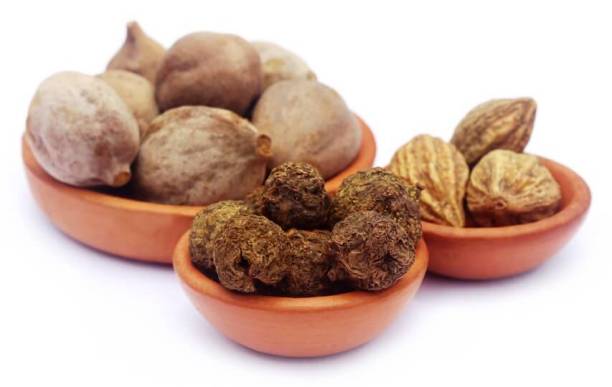
Triphala Guggul is a very famous Ayurvedic medicine in tablet form. It is also known as Triphala Guggulu tablets, Triphala Gulgulu etc. This tablet has Guggulu (commiphora mukul) as its base.It is widely used in the Ayurvedic treatment for weight loss.
Triphala Guggul benefits:
It is widely used in the Ayurvedic treatment of weight loss, piles, fistula and inflammatory conditions.
Triphala Guggul Ingredients:
Haritaki – Terminalia chebula – 48 g
Vibhitaki – Terminalia bellirica – 48 g
Amalaki – Emblica officinalis – 48 g
Krishna – Long pepper – 48 g
Guggulu – Purified Commiphora mukul.
All the above ingredients are pounded with guggulu and rolled into pills of uniform size of 500 mg.
Triphala Guggul reference:
Sharangdhara Samhita madhyamakhanda 7/82-83
Dosage: 1 teaspoon three times a day after food
· Jatyadi Ghrita
Jatyadi Ghrita is an Ayurvedic medicine, in herbal ghee form.This medicine has ghee as its base. It is used for the preparatory procedure for Panchakarma and also as a medicine. It is also known as Jatyadi Ghritam. This medicine is used for external application only.
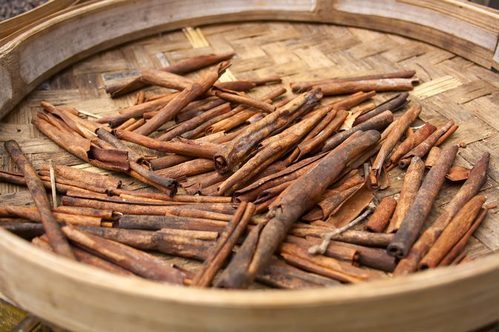
Jatyadi Ghrita benefits:
It is used externally in the treatment of deep-seated wounds and ulcers, non-healing wound with secretions.
Useful in skin tuberculosis lesions.
Jatyadi Ghrit Ingredients:
Jati – Jasminum sambac- 14.76 g
Nimbapatra – neem leaves- 14.76 g
Patolapatra – Trichosanthes dioica- 14.76 g
Katuka – Picrorrhiza kurroa- 14.76 g
Darvi – Berberis aristata – 14.76 g
Nisha – Curcuma longa – 14.76 g
Sariva – Hemidesmus indica- 14.76 g
Manjishta – Rubia cordifolia- 14.76 g
Abhaya – Terminalia chebula / Vetiveria zizanioides – 14.76 g
Siktaka – Honey bee wax – 14.76 g
Tuttha – Purified blue vitriol – 14.76 g
Madhuka – Glycyrrhiza glabra- 14.76 g
Naktahva – Pongamia pinnata – 14.76 g
Sarpi – ghee – 768 ml
water – 3.072 liters
The above combination is heated till herbal ghee is prepared.
Jatyadi Ghrita reference:
Ashtanga Hrudaya Uttarasthana 25/67
Dosage: External Application over the wound
· Sahacharadi Thailam
Sahacharadi Thailam is an Ayurvedic herbal oil used in the treatment of Vata imbalance disorders, muscle and joint stiffness and convulsions. It is used orally and also for massage.

- Sahacharadi Tailam uses: It is useful in the Ayurvedic treatment of Vata diseases, tremors, convulsions, psychosis, the stiffness of thigh, muscle cramps, and muscle wasting.
It helps to relieve rhinitis and sinusitis.
It is useful in gynecological disorders.
- Sahacharadi Thailam ingredients and how to make:
Coarse powder of –
Sahachara – Strobilanthes ciliates – 4.8 kg
480 grams of each of
Bilva – Aegle marmelos
Agnimantha – Premna mucronata
Shyonaka – Oroxylum indicum
Gambhari – Gmelina arborea
Patala – Stereospermum suaveolens
Shalaparni – Desmodium gangeticum
Prinshnaparni – Urarica picta
Gokshura – Tribulus terrestris
Brihati – Solanum indicum
Kantakari – Solanum xanthocarpum
Abhiru – Asparagus racemosus – 2.4 kg
Water for decoction – 49.152 liters, boiled and reduced to 12.288 liters, filtered.
Paste prepared from fine powders of 48 g of each of
Sevya – Khus Khus – Vetiveria zizanioides
Nakha – Capparis sepiaria
Kushta – Saussurea lappa
Hima – Sandalwood – Santalum album
Ela – Cardamom – Elettaria cardamomum
Sprikka – Anisomeles malabarica
Priyangu – Callicarpa macrophylla
Nalika – Hibiscus cannabinus
Ambu – Pavonia odorata
Shaileya – Parmelia perlata
Lohita – Indian Madder (root) – Rubia cordifolia
Nalada – Nardostachys jatamansi
Loha (Agaru) – Aquilaria agallocha
Surahva – Himalayan cedar (bark) – Cedrus deodara
Choraka – Angelica glauca
Mishi – Indian Dill – Anethum sowa
Turushka – Liquid amber orientalis
Nata – Indian valerian (root) – Valeriana wallichi
Ksheera – Cow milk – 3.072 liters
Taila – Sesame oil – Sesamum indicum – 3.072 liters
The above set of ingredients is heated till only oil remains, filtered.
Reference of Sahacharadi Tel: Ashtanga Hrudayam Chikitsa Sthana 29 / 66-68
Dosage: 1o drops with milk at night.
- Plain unheated coconut oil – For external application
Ayurvedic Treatment For Venous Skin Ulcer At Central India, if you are suffering from following Venous Skin Ulcer take a direct consultation From Dr. Nitesh Khonde.
Useful Tips From Experts In Ayurvedic Treatment For Stress
Stress Treatment in Nagpur: Stress is a global epidemic that is costing people dearly. Right from hair loss to lower life expectancy, stress disorders have contributed to almost all kinds of immediate and long-term health repercussions in the victims. People suffering from stress experiences anxiety, irritation, mood swings, depression, unhappiness and a general feeling of unwell.

The effects of stress management pills are quick to wear off but the trail of side effects remain for a lifetime. Ayurvedic stress treatment in Nagpur as an alternate to chemical drugs is delivering better and long-standing results for the users. The Ayurvedic clinic Parijatak is one of the most visited Ayurvedic clinics in the city.
The All-Natural Treatments
Organic Vata Tea: This tea pacifies the vata and helps the mind to calm down and ascend from its noisy state. As the mind relaxes, so does the body. This Ayurvedic tea can be taken once or twice a day, depending on the acuteness of the condition.

Spice Mix: Ayurveda advocates the introduction of all six tastes in every meal for an overall good health. This spice mix or churna is a punch of spices and seasonings that have all the 6 tastes. The mix can be had by adding it to curries or by sprinkling it over any dish as taste enhancers.
.jpg)
Veda Medicine: This is another Vata pacifier that reverses the imbalance of the vata. It is prescribed in capsule and tablet forms. You can take it with water or warm milk. Dosage of this stress treatment in Nagpur is as recommended by your physician.

Baking Soda and Ginger instead of Soap: Prepare a warm bubble bath to step in, at the end of a long and tiring day. Only add a quarter cup of ginger juice and baking soda instead of bubble bath soap for a refreshing soak.

The traditional Ayurvedic remedies are best cure for glioblastoma, stress, autism and a wide variety of mental disorders. Believe in the miraculous Ayurvedic remedies. You will get the best of it.
Everything You Wanted to Know About Ayurvedic Treatment for Depression
Due to the competitive lifestyle, many peoples in the world were suffering from this Depression. Near about !0% of the population suffered from this problem. In Ayurveda, it is called as Vishaad or Manoavasad. Depression not only affects the mind but also it affects the body of a person.
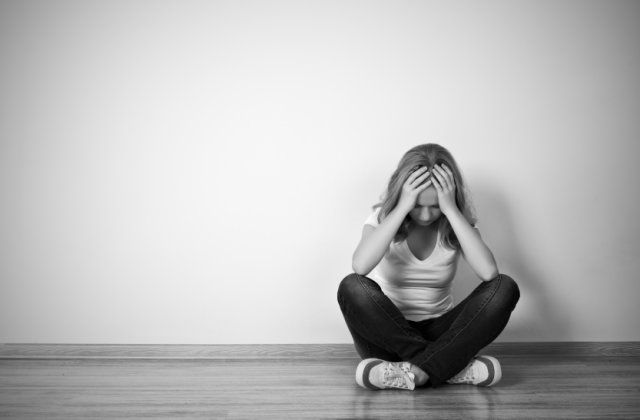
Causes
Genetic Factor,
Environmental condition,
Family surroundings like parents negligence towards child
Long-term illness
Post partum period
Negative thoughts
In Ayurveda, vitiation of tridosha (Vata, Pitta, Kapha) causes an imbalance of psychic energies (sattva, rajas, tamas) which leads to various mental disorders. This applies to depression as well. Lack of mental discipline, indulgence in negative thoughts and activities and negative emotions, such as hatred, anger, etc. are known to cause an imbalance in psychic energies which in turn leads to diseases like depression.
Symptoms
- Mood Alteration (sadness or anger or anxiety)
- Fatigue

- Sleep disturbances
- Irritability
- Loss of concentration
- Feeling of worthlessness
- Social isolation
- Loss of interest in work.
Treatments for Depression :
PANCHKARMA-
Abhyangam : A full body massage with medicated oil increases blood circulation. By which internal toxins can be eliminated from the body. Stimulation of vital pressure points leads to nervous stimulation leading to stress reduction.
Padabhyangam.By the foot massage, we apply the pressure on vital points which balances the Doshas. Stimulation of vital points induces mental calmness and relief from stress.
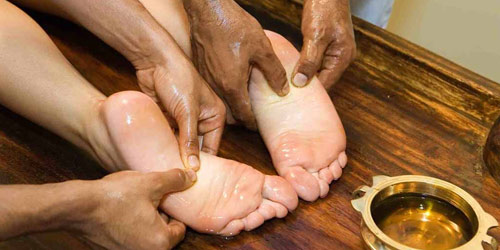
Nasyam : Nasyam means administration of medicines through the nose. Nasyam stimulates the vital centers of the brain that regulate emotions.
Pizhichil : Means squeezing of a body with medicated oil. It helps in physical and mental relaxation. The stress and tension building up in the system due to various factors often leads to oxidative stress which can be effectively combated by Pizhichil.
Kizhi : Pottali prepared with powders, herbs, rice or sand tare heated and then apply over the body or specific parts of the body. This leads to an improvement in circulation. Enhanced circulation reduces the oxidative stress thereby relieving the psycho-physical symptoms of stress.
Shirodhara : pouring of medicated oil on the forehead for a specific period of time called as Shirodhara. It stimulates and soothes the hypothalamus to induce sleep by reducing stress.
Medicines-
- Arjuna
- Ashwagandha
- Brahmi
- Mandukparni
- Jatamansi
- Lavang
- Amlaki
- Shatavari
- Guduchi
- Vacha
Ayurvedic Treatment for Glioma the Best Solution
Ayurvedic Treatment Of Glioma At Central India
About Glioma-
A Glioma is a type of tumor that starts in the brain or spine. It is called a glioma because it arises from Glial cells. The most common site of gliomas is the brain. gliomas make up 30% of all brain and central nervous system tumors and 80% of all malignant brain tumors.

Three types of glial cells can produce tumors. Gliomas are classified according to the type of glial cell involved in the tumor.
Types of glioma include:
- Astrocytomas,including astrocytoma, anaplastic astrocytoma, and glioblastoma
- Ependymomas,including anaplastic ependymoma, myxo papillary ependymoma, and subependymoma
- Oligodendrogliomas,including oligodendroglioma, anaplastic oligodendroglioma, and anaplastic oligoastrocytoma
Gliomas can affect your brain function and be life-threatening depending on their location and rate of growth.
Gliomas are one of the most common types of primary brain tumors.
Symptoms
The symptoms of glioma vary by tumor type as well as the tumor’s size, location,and rate of growth.
Common signs and symptoms of gliomas include:
- Headache
- Nausea or vomiting
- Confusion or a decline in brain function
- Memory loss
- Personality changes or irritability
- Difficulty with balance
- Urinary incontinence
- Vision problems, such as blurred vision, double vision or loss of peripheral vision
- Speech difficulties
- Seizures, especially in someone without a history of seizures

These symptoms usually come on gradually over a period of days to months. Depending on what part of the brain the glioma is in, the symptoms may vary. Patients with brain tumors are also at increased risk of developing blood clots in the leg (deep vein thrombosis, DVT), lung (pulmonary embolism, PE), or brain (stroke). Unfortunately, the symptoms of a brain tumor are quite general and can also be caused by a number of other, non-cancerous, conditions.
Causes:
Like most primary brain tumors, the exact cause of gliomas is not known. But there are some factors that may increase your risk of a brain tumor. Hereditary genetic disorders such as neurofibromatoses (type 1 and type 2) and tuberous sclerosis complex are known to predispose to their development. Different oncogenes can cooperate in the development of gliomas. Researchers have observed in some studies that brain tumor patients (or their mothers) have generally consumed more cured foods (also known as Curing) than control groups.
Gliomas have been correlated to the electromagnetic radiation from cell phones, and a link between cancer and cell phone usage was considered possible,
Risk factors-
Risk factors include:
Risk factors include:
- Your age.Your risk of a brain tumor increases as you age. Gliomas are most common in adults between 60 and 80 years old. However, a brain tumor can occur at any age. Certain types of gliomas, such as ependymomas and pilocytic astrocytomas, are more common in children and young adults.
- Exposure to radiation. People who have been exposed to a type of radiation called ionizing radiation have an increased risk of brain tumor. Examples of ionizing radiation include radiation therapy used to treat cancer and radiation exposure caused by atomic bombs. More common forms of radiation, such as electromagnetic fields from power lines and radio-frequency radiation from cell phones and microwave ovens, have not been shown to increase the risk of glioma.
- The family history of glioma. It’s rare for glioma to run in families. But having a family history of glioma can double the risk of developing it. Some genes have been weakly associated with glioma, but more study is needed to confirm the link between these genetic variations and brain tumors.
Ayurvedic Treatment Of Glioma At Central India
1.Kaphavata & Medoharam
- Sopha Haram
- Use Of katu Rasa
- Lekhana Guna, Usna tiksna pramati drugs
Ayurvedic Medicine For Glioma
Varanadi Kashayam
Varanadi Kashayam is herbal formulation used in Ayurveda for the treatment of urinary disorders, skin diseases, and obesity.Varanadi Kashayam has the capacity to correct the digestion and metabolism. It helps in fatty liver, belly fat and central obesity. In skin diseases, it is beneficial to reduce itching. Therefore, it can be helpful in eczema and dermatitis.

Varanadi Kashayam contains following ingredients.
- Crataeva nurvala (Varuna)
- Asparagus racemosus (Shatavari)
- Plumbago zeylanica (Chitrak)
- Strobilanthes ciliatus (Sairyaka)
- Chonemorpha fragrans (Moorva)
- Aegle marmelos (Bael or Bilva or golden apple)
- Aristolochia bracteolate (Vishanika, Kiramar)
- Solanum melongena (Brihati)
- Aerua lanata (Bhadra)
- Pongamia glabra (Karanja)
- Holoptelia integrifolia (Pootikaranja)
- Premna corymbosa (Jaya)
- Terminalia chebula (Hareetki)
- Moringa oleifera (Sahijan, Bahalapallava)
- Desmostachya bipinnata (Kush, Darbha)
- Semecarpus anacardium (Agnimukh, Rujakara, Marking Nut)
Dosage: 60ml before food with Bhallatakam Ghrtam.
Kanchnar Guggulu
Kanchnar Guggulu is also known as Kanchanara Guggulu / gulgulu.It is one of the very efficient Ayurvedic herbal medicine. Its reference is found in Bhaishajya ratnavali, 44th chapter.
Ingredients –
Bauhinia variegata L. (Bark),
Terminalia chebula Retz (Fruit rind),
Terminalia bellerica (Fruit rind),
Emblica officinalis (Fruit),
Zingiber officinale (Rhizome),
Piper nigrum (Fruit),
Piper longum Linn (Fruit),
Crataeva nurvala (bark),
Elettaria cardamomum (Fruit),
Cinnamomum Zeylanicum (Leaves & Bark)
Commiphora mukul (Guggulu Resin)
Useful in treating goiter (nodules of the neck), tumors and extra growths, useful in herbal wound healing, skin diseases, sinuses, and fistula.
Dosage: 2-3 times a day after food.
Cow Urine (Gomutra arkam)
Dosage: 25ml in the evening (lekhana in action)
Haritaki Churna

In Ayurveda, Haritaki is referred to as a herbaceous plant used primarily in various medicinal formulations. In Ayurveda, the philosophy of longevity is described in the Charka Samhita that it possesses five rasas, or tastes, out of the existing six as described in the Charka Samhita. These tastes are, respectively, sweet, sour, salty, pungent, bitter and astringent; Haritaki being devoid of the salty taste. Haritaki is hot, carminative, and it is light, works as an appetizer bringing about the stimulation of digestion, digestive, promoter of life. Tonic, a herb helping in the sustenance of youthful age, alleviates all diseases and provides strength to all the sense organs.
Dosage: 1 teaspoon with warm water
Ardha bilva paniyam – 50 ml /day (Sophaharam)
Amazing Pathya-Apathya for Obesity Hacks
Pathya-Apathya for Obesity Treatment in Ayurveda
Obesity is a condition where a person has accumulated so much body fat that it might have a negative impact on his health. If a person’s body weight is even 20% higher than it should be, he or she is considered obese. There are many reasons why people become obese. It may be the intake of high caloric food, sedentary lifestyle, getting less sleep, defective lipid metabolism, smoking, use of certain medication, or presence of certain genes that make a person more vulnerable to obesity.

Pathyakarahar (Do’s) for Obesity Treatment
These are the things that are recommended in Ayurveda which help to reduce body weight. When consumed in proper proportions in the form of herbal remedies, these Ayurvedic things help to shed fat from your body.
- Anna varga-PuranaShali(Old variety of Rice),Raktashali( Red variety of Rice)Shasthikashali(Rice harvested in 60 days),Yava(Barley),Chanaka(Chickpea) ,Kulatha(Horsegram)
- Jalavarga-ShrutaSheetaJala(LukeWarm Water)PanchkolashrutaJala(Water with Panchakola)Shunti siddha jala ( Ginger Water)
- Madhu(Honey)
- Madyavarga-PuranaSidhu( Old Wine)
- Mutravarga-Gomutra (Cow’s Urine)

- Kanda varga-Lasuna(Garlic) ,Ardraka ( Wet Ginger ) ,Sunthi ( Dry Ginger)
- Ksheeravarga- Takra ( Buttermilk)
- Shakavarga- Patola(Bottlegourd) ,Karavellaka ( Bitter gourd) ,Varthaka (Brinjal)Nimbapatra(Neem leaves) ,Shigru ( Drum Stick)
- Mamsavarga-JangalaMamsa (Forest meat)
Besides these, regular exercise, Yoga and pranayama have to be done regularly.
Light food intake is advisable.
An important fact is that most of the vegetables are good to reduce the formation of Kapha as well Ama, so it always consumed warm and along with some spices.
ApathyaAhara and Vihar (Don’ts) for Obesity Treatment
These are the things use of which are prohibited when you are overweight and want to go for an Ayurvedic weight loss regimen.

- Anna varga- Navanna (New variety of Rice)Sreeharsha.
- Masha (Black gram)
- Taila Oil
- Jalavarga-DushitaJala( Polluted water) SheetaJala ( Cold water)
- Madyavarga-NutanaMadya(New Wine)
- Kanda varga- Aluka (Potato)
- Ksheeravarga–Dadhi( Curd),Ksheera (Apakva) Milk
- Guda(Jaggery)
- Mamsavarga-AnupaMamsa(Marshyland Animal meat)
Shun the habits like Diwaswap (Day sleeping), Ratrijagaran(Night awaking), Aalasya (inactive or sedentary lifestyle).
Avoid Ahara having Guru Snigdha, Ati Drava, Picchila and AbhishyandiGunatmaka. Excess consumption of food is called as AthiMatraAharaSevana; it must be avoided.
Avoid drinking excessive water after consuming food as it slow down the process of digestion.
Consumption of dairy products, oily foods, salty and sour food articles should be limited.
Ayurvedic Weight Loss Program at Parijatak

Parijatak Ayurveda is one of the most renowned weight loss treatment centres based in Nagpur India and works upon its specially designed weight loss program efficiently. The experts have customised weight loss program with specially drafted diet plan and yoga schedules. One needs to follow the instructions of the doctors at Parijatak religiously if they want good results in obesity treatment. The herbal remedies formulated here are very effective and have been appreciated by many of the clients. Ayurveda helps you to lose weight gradually but in proper way, without producing any side effects. Consult Parijatak’s experts to get your body back in form and get rid of the others disorders associated with obesity.
The Untold Secret To Mastering Ayurvedic Treatment for Obesity
Ayurvedic Treatment for Obesity
Obesity has become one of the fastest growing disorder of the decade. From children to adults, one in four individuals is obese. Obesity means that the body mass index (BMI) is more than 27. Excessive accumulation of fat in the body causes obesity. In a day we consume near about 1600-2000 calories and only 1000-1200 calories utilization done by yourself means near about 600-800 calories remain in the body. This leads to excess deposition of fat in the body and causes obesity.

Increased body fat put the person at risk of critical diseases like heart disorders, diabetes, kidney ailments, liver diseases, arthritis and much more.
Ayurvedic View of Obesity
Acharya Charak explained obesity in “Asthnidit Adhaya ”. It is known as Medoroga. It is called by aggravation of Kapha. Kapha is normal state provide nourishment to tissues through various microchannels, but when it is aggravated it leads to the production of toxins in the body. These toxins accumulate in channels and causing obstruction of channels.
In medoroga, the toxins accumulate in medovah strotas and leading to increased production of medadhatu. Hence, if you want to treat obesity its first step is the purification of Kapha dosha and 2nd step is cleansing and medovah strotas (fat channels) through medicines and panchakarmas.

Pacification of Kapha doshas done by “vaman”. Vaman means the elimination of doshas through vomiting. It is done by medicated decoction of madanphala and yastimadhu. After vaman 7 days of “Sansarjana Karma” means diet schedule followed by the patient which leads to the elimination of doshas and ulceration of agni means digestive power. Vaman also helps in cleansing of small channels.
After vaman virechan should be done. It is for pitta dosha but the doshas which remain in body even after vaman should be removed by virechan therapy. It also causes cleansing of medovah stroas.
Panchakarma like vaman-virechana does not help in weight reduction it helps in “Reduction of fat”.

Weight Loss Management
Diet and Lifestyle: You need to follow a lifestyle as prescribed by the experts.
- Avoid high carbohydrates like potato, polished, rice.
- Increase intake of fruits and salads
- Avoid oily and spicy foods drink of lukewarm water with lime
- Use of powdered cum seeds, coriander leaves salt and ginger powder with outer milk should be recommended.

Yoga: Following that, specific yoga postures can give you good results in reducing body weight. They have to done under the supervision of yoga gurus initially.
- Dhanurasana
- Bhuyangasana
- Ardhamasiendraysana
- Trikonasana
- Surya Namaskar

Obesity treatment at Parijatak
Being obese has become a kind of unavoidable disorder that develops in us. By the time we realise the serious effects of being overweight, it quite late and we see many other ailments being brought in its trail. For those who cannot work upon any weight loss program (which more or less brings you back to obese condition once you stop the program), getting on to Ayurvedic program is the best solution.

Parijatak Ayurveda follows traditional methods of reducing the extra body weight which has no side effects on your body. Being one of the renowned Ayurvedic weight loss centres in India, it gives natural remedies in its specially designed weight loss programs. The experts take care of diet plan, medication, application of natural medicines, exercises, and even minor things that can bring change in your body weight. Trust Parijatak for Ayurvedic solutions and get a healthy life.